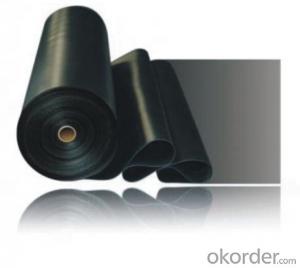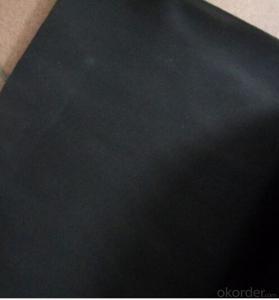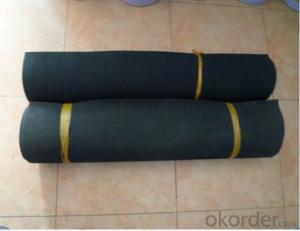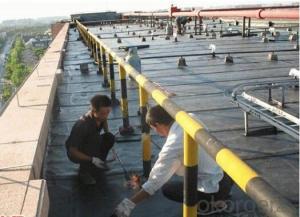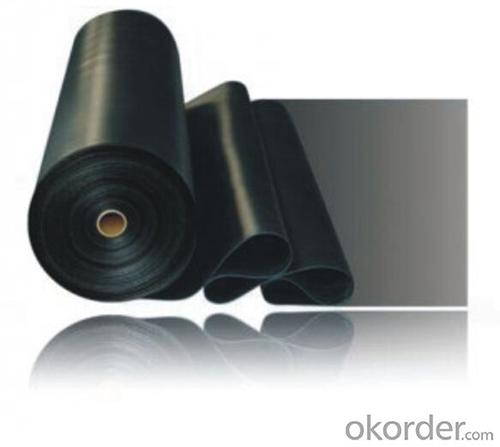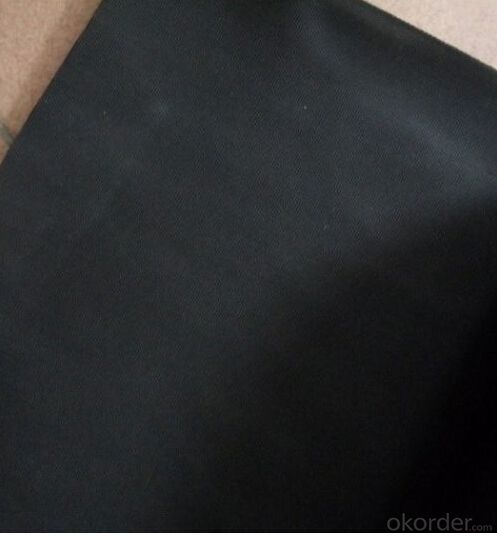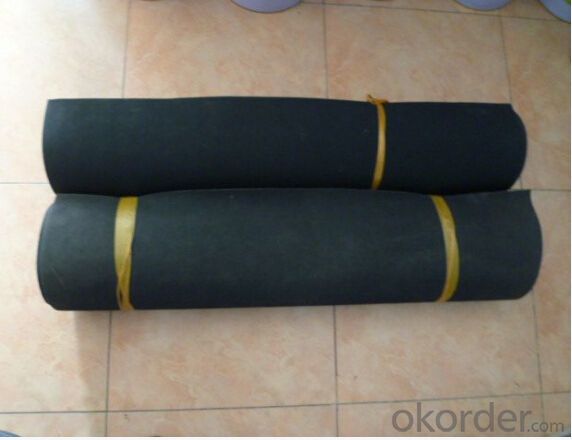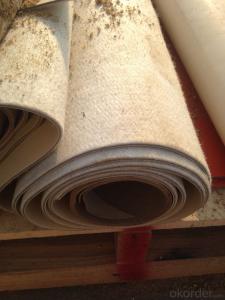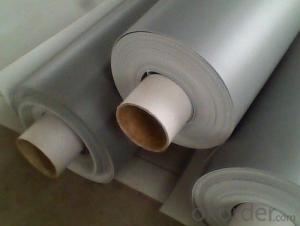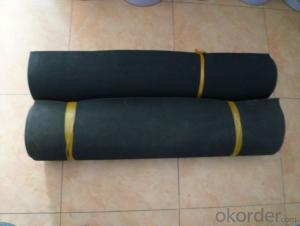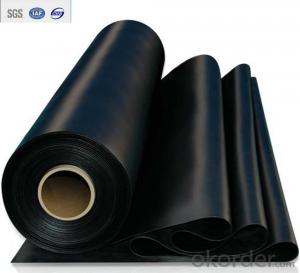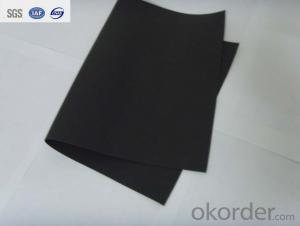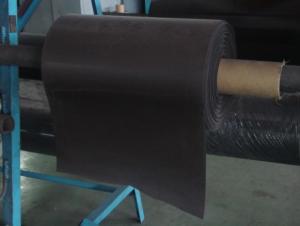Width 2m EPDM Waterproofing Membrane for Roof Use
- Loading Port:
- Qingdao
- Payment Terms:
- TT OR LC
- Min Order Qty:
- 2000 m²
- Supply Capability:
- 100000 m²/month
OKorder Service Pledge
OKorder Financial Service
You Might Also Like
EPDM waterproofing Rubber membrane
1. Product Description of EPDM Waterproofing Membrane:
EPDM Waterproofing Membrane is the modified materials which is widely used at home and abroad in the kinds of roofs, tunnel, basement such sorts of constructions' waterproofing.
They are based upon EPDM rubber with modifier, softener and accelerant assistants added to provide flexibility and stability . Through the precise ingredients, mixing, extrusion, rolling, curing processes to made of modified EPDM Waterproofing material with high strength and high flexibility.
2. Product Features of EPDM Waterproofing Membrane:
1). Great tensile strength,long-range elasticity and aging resistant.
2). Excellent heat reisistant and can be used under -70°C~~+110°C .
3).Good anti-corrosion, ultraviolet resistant, root penetration resistance
4).Long life use over 50 years and used longer 100 years or more under the condition of buried in the ground.
5).Light and easy to install.
3. Product Sepcification of EPDM Waterproofing Membrane:
Thickness : 0.3-2.0mm
Width :1-4m
Length: 15-50m/roll
Item | value | ||
JL1 | JF1 | ||
Tensile Strength (Mpa) | normal tamperature | 7.5 | 4.0 |
60°C ≥ | 2.3 | 0.8 | |
Elongation at break (%) | normal tamperature ≥ | 450 | 450 |
-20°C ≥ | 200 | 200 | |
Tear Resistance (N) | ≥ | 25 | 18 |
Water impermeability | 30mm | 0.3Mpa | 0.3Mpa |
Cold bending | (°C) ≤ | -40 | -30 |
Heating Shrinking rate | extand < | 2 | 2 |
shrink < | 4 | 4 | |
4.Product Application of EPDM Waterproofing Membrane:
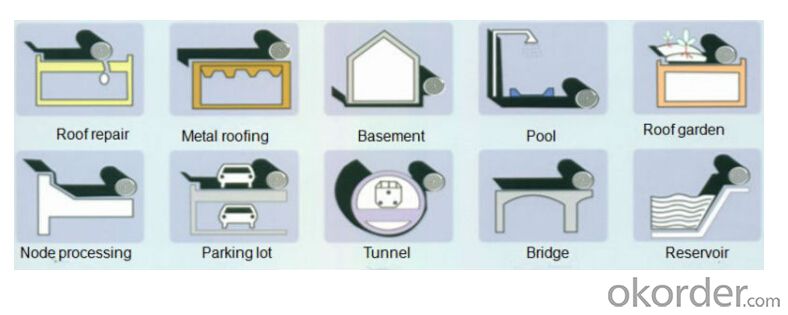
4. Some photos:
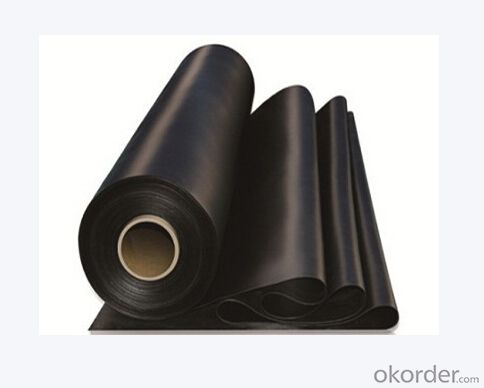
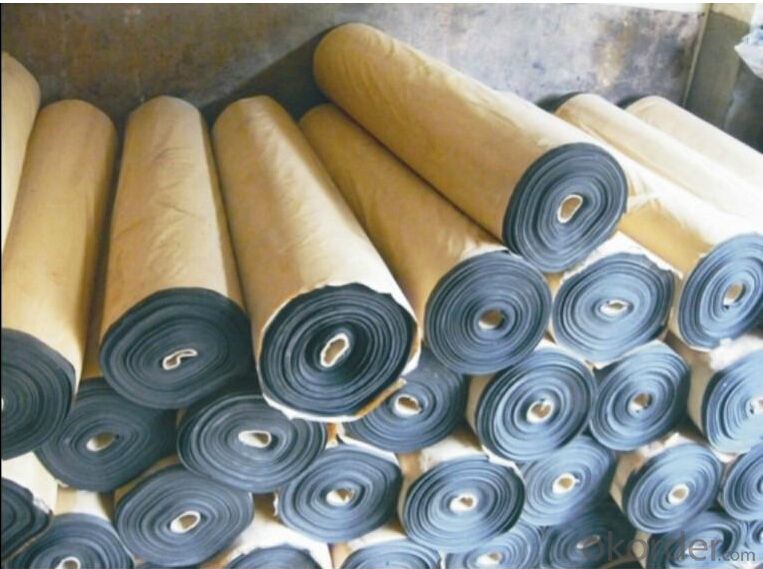
- Q: Can a waterproofing membrane be used in bridge decks or roadways?
- Yes, a waterproofing membrane can be used in bridge decks or roadways. A waterproofing membrane is a protective layer that is applied to the surface of a structure to prevent water infiltration, thereby increasing the lifespan of the structure. In the case of bridge decks and roadways, which are constantly exposed to harsh weather conditions and heavy traffic, the use of a waterproofing membrane is crucial. Bridge decks and roadways are vulnerable to damage caused by water penetration, such as corrosion of steel reinforcements and the deterioration of concrete. By applying a waterproofing membrane, a barrier is created that prevents water from seeping into the structural elements, reducing the risk of corrosion and extending the durability of the bridge or roadway. Furthermore, a waterproofing membrane can also help to prevent the formation of cracks and potholes, which are often caused by the freeze-thaw cycle and the penetration of water. By keeping the surface of the bridge deck or roadway dry, the membrane helps to maintain its structural integrity and prevent the need for costly repairs or premature replacement. It is worth noting that when considering the use of a waterproofing membrane in bridge decks or roadways, factors such as material selection, installation techniques, and maintenance should be carefully considered. The chosen membrane should be compatible with the materials used in the construction of the bridge or roadway, and the installation process must be carried out properly to ensure a watertight seal. Regular maintenance and inspections should also be conducted to identify any potential issues or damage to the membrane, allowing for timely repairs and ensuring its effectiveness over time. Overall, the use of a waterproofing membrane in bridge decks or roadways is an effective solution to protect against water damage and extend the lifespan of these critical infrastructure elements.
- Q: Are waterproofing membranes resistant to sulfuric acid exposure?
- Waterproofing membranes typically do not possess resistance against sulfuric acid exposure. Sulfuric acid, being an immensely corrosive substance, has the potential to inflict substantial harm to various materials, including waterproofing membranes. The membrane's deterioration can occur as a result of sulfuric acid's highly acidic properties, ultimately causing its failure. Hence, if there exists a chance of sulfuric acid exposure, it becomes crucial to employ materials that are explicitly engineered to endure such corrosive substances.
- Q: Do waterproofing membranes require maintenance?
- Yes, waterproofing membranes do require maintenance. While they are designed to provide long-lasting protection against water damage, regular maintenance is necessary to ensure their effectiveness. Over time, the membrane may develop cracks, tears, or other forms of damage that can compromise its waterproofing capabilities. Additionally, debris, dirt, and other substances can accumulate on the membrane's surface, obstructing drainage and causing water to pool. Therefore, it is important to inspect the membrane regularly and address any issues promptly. This may involve cleaning the surface, patching or replacing damaged sections, and resealing seams or joints to maintain a watertight barrier. Regular maintenance not only prolongs the lifespan of the waterproofing membrane but also helps prevent costly water damage to the underlying structure.
- Q: Can a waterproofing membrane be used for underground parking garages?
- Yes, a waterproofing membrane can be used for underground parking garages. In fact, it is highly recommended to use a waterproofing membrane in these types of structures to prevent water infiltration and damage. Underground parking garages are prone to water seepage from the surrounding soil, and the constant exposure to moisture can lead to structural deterioration, corrosion of steel reinforcements, and the growth of mold and mildew. A waterproofing membrane acts as a barrier, preventing water from penetrating the walls and floors of the garage. It is applied to the exterior surfaces of the structure, providing a protective layer that keeps the interior dry and free from water-related issues. The membrane should be selected based on the specific requirements of the project, considering factors such as the type of construction materials, the groundwater conditions, and the anticipated level of water pressure. Additionally, proper installation techniques and regular maintenance are crucial to ensure the long-term effectiveness of the waterproofing system.
- Q: Can a waterproofing membrane be used on roofs with rooftop gardens?
- Indeed, rooftops with gardens can benefit greatly from the utilization of a waterproofing membrane. Employing a waterproofing membrane is strongly advised as it shields the foundational framework from harm caused by water. Given that a rooftop garden contributes additional weight and moisture to the roof, it is imperative to have a reliable waterproofing system in place to avert leaks and guarantee the roof's durability. The waterproofing membrane serves as a safeguard against water infiltration, effectively maintaining dry conditions for both the rooftop garden and the underlying structure.
- Q: How does a waterproofing membrane handle freeze-thaw cycles?
- A waterproofing membrane is designed to handle freeze-thaw cycles by being flexible and resistant to cracking. It should be able to expand and contract with temperature fluctuations without compromising its waterproofing properties. Additionally, it should have good adhesion to the substrate to prevent water infiltration and damage during these cycles.
- Q: Is a waterproofing membrane resistant to UV radiation?
- Yes, a waterproofing membrane is typically resistant to UV radiation. Most waterproofing membranes are designed to be durable and long-lasting, and part of that includes being able to withstand exposure to UV rays. UV radiation from the sun can cause degradation and damage to various materials over time, including waterproofing membranes. However, manufacturers often incorporate UV stabilizers and additives into the membrane's composition to enhance its resistance to UV radiation. These additives help to prevent the breakdown of the membrane's structure, ensuring that it remains effective in preventing water infiltration and maintaining its overall performance for an extended period, even when exposed to direct sunlight. Additionally, some waterproofing membranes may have a protective layer or coating that offers additional UV resistance. It is always recommended to consult the manufacturer's specifications and guidelines to understand the specific UV resistance capabilities of a particular waterproofing membrane.
- Q: What is the accounting subject of the waterproofing membrane
- Own spare, included in the project materials Waterproof sheet, used for sale, remember inventory goods
- Q: Are waterproofing membranes resistant to algae growth?
- Waterproofing membranes generally resist the growth of algae. These membranes are designed to be highly durable and withstand various environmental factors, including algae growth. They are typically made from materials like PVC, TPO, or EPDM, which inherently resist algae and other microbial growth. Additionally, manufacturers often treat waterproofing membranes with anti-algae and anti-fungal agents to further enhance their resistance. However, it's important to note that while these membranes resist algae growth, regular cleaning and maintenance are still necessary to ensure their long-term performance and prevent the accumulation of dirt or debris that could create an ideal environment for algae.
- Q: Can a waterproofing membrane be used on aluminum surfaces?
- Yes, a waterproofing membrane can be used on aluminum surfaces.
Send your message to us
Width 2m EPDM Waterproofing Membrane for Roof Use
- Loading Port:
- Qingdao
- Payment Terms:
- TT OR LC
- Min Order Qty:
- 2000 m²
- Supply Capability:
- 100000 m²/month
OKorder Service Pledge
OKorder Financial Service
Similar products
Hot products
Hot Searches
Related keywords
